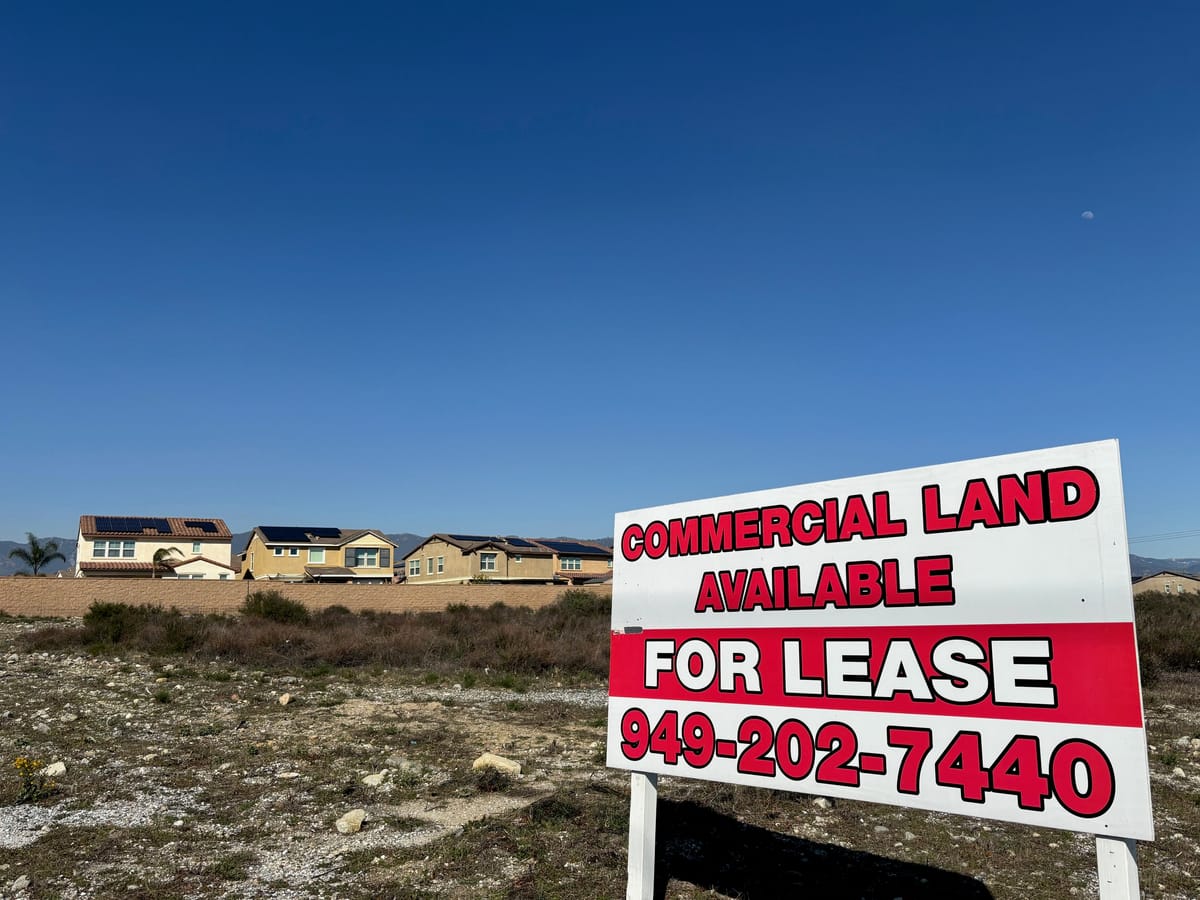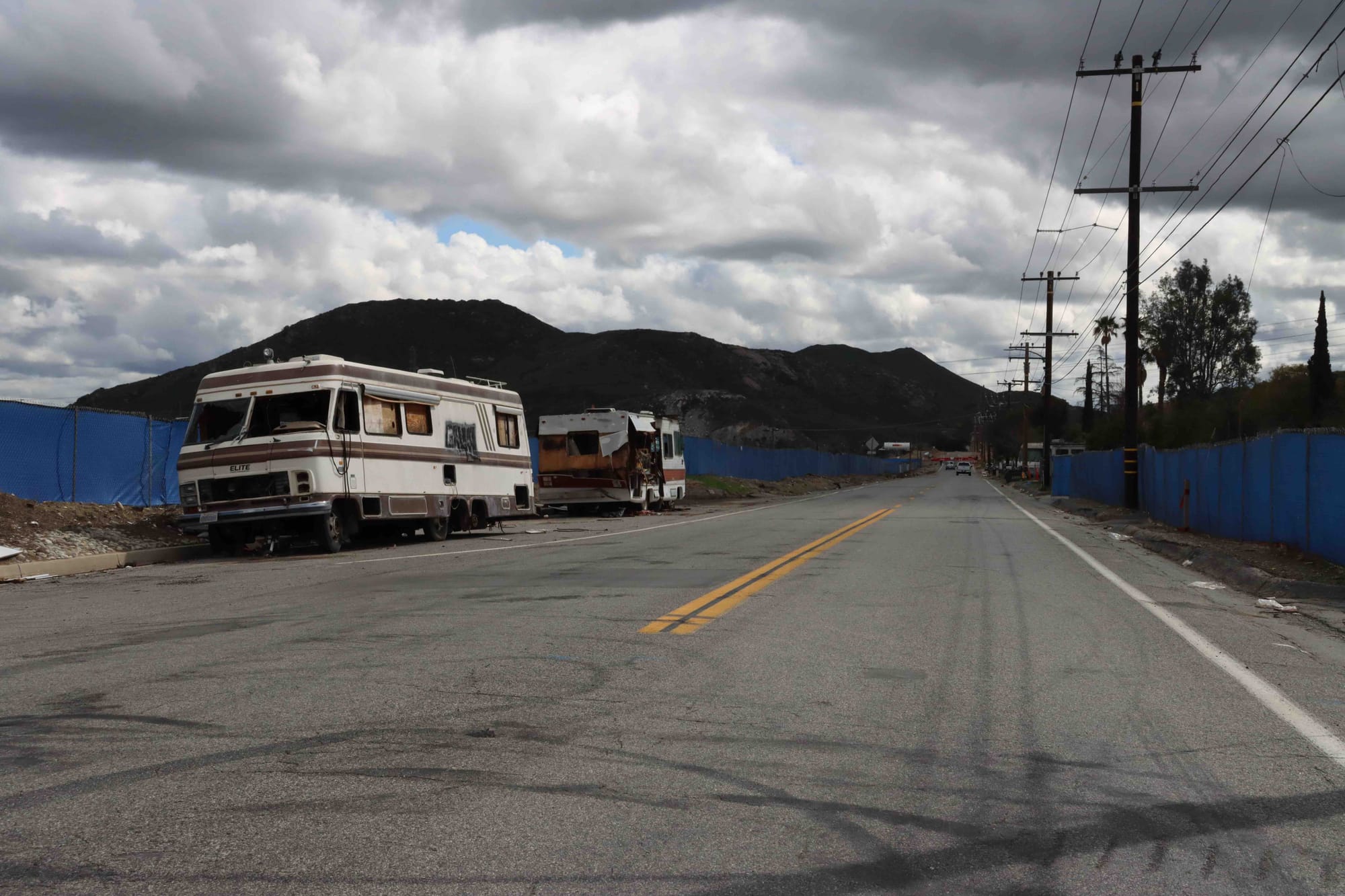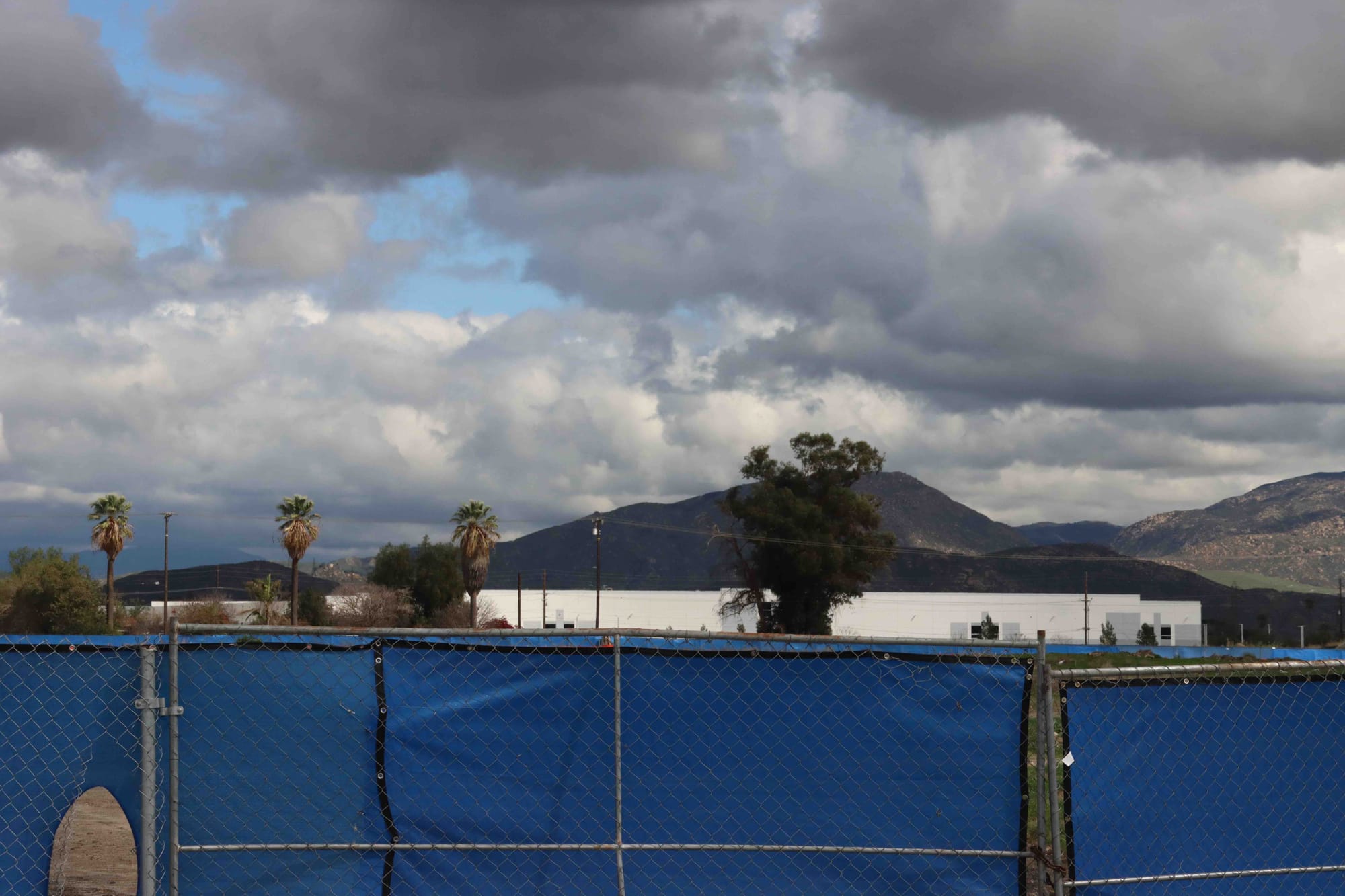Inland Empire Latinos struggle with area’s warehouse expansion
Public data shows Latinos are disproportionately affected by the consequences of warehouse construction, community members say.

Ana Gonzalez has lived in Rialto for 27 years. Her son, who is now 19 years old, suffers from asthma since being diagnosed at age 12.
“That's what actually led me to do work in environmental justice,” said Ana Gonzalez, who now leads the Center for Community Action and Environmental Justice (CCAEJ) as its executive director.
Gonzalez, who is Latina and the daughter of immigrants, says many families in the area are working class Latinos who are working two to three jobs just to feed their children. Gonzalez says the warehousing industry and the lack of green space have further exacerbated inequality.
“We have the highest rates of asthma and cancer in the country, and that is not normal,” Gonzalez said.
A new data brief released by UCLA’s Latino Policy and Politics Institute backs up Gonzalez’s assertions. According to the research, Latino neighborhoods are exposed to greater amounts of diesel pollution, increasing their risks of asthma, lung cancer, and heart disease.
Gonzalez says poor leadership in the Inland Empire is partly to blame for the proximity of warehouses built near sensitive receptors.
“Our kids are the ones who breathe faster. So, that’s why they’re the ones that are most vulnerable to asthma and having pulmonary issues,” said Gonzalez. “Rich corporations come and take advantage of our people and put warehouses next to people’s backyards, next to parks, and next to schools without providing guardrails.”
Research shows that warehouse expansion in the Inland Empire is the main culprit for environmental and health concerns. San Bernardino and Riverside counties rank among the top five most ozone-polluted areas in the U.S. From 2000 to 2022, the number of mega warehouses—facilities larger than 100,000 square feet—grew by 166%. Most depend on diesel trucks that release nitrogen dioxide, polluting nearby disadvantaged communities.
Unincorporated communities, which are largely Latino, are hardest hit by warehouse boom

Bloomington, once a rural escape from urban cities, is now dominated by warehouse-lined streets bordering rural neighborhoods.
The Bloomington Business Park Specific Plan, now owned by Brookfield Properties, was halted by a lawsuit filed in 2022 over its impact on nearby schools and parks.
A warehouse located just half a mile from Bloomington’s Joe Baca Middle School—with a student population that is 93% Latino and Hispanic—has raised similar concerns.
Educator Caitlin Towne, who attended Bloomington High School in the past, now teaches at Joe Baca Middle School. She recalls that the air quality was never as poor as it is now.
“A lot of kids have asthma at my school and in the area. Adults have asthma. It’s just a huge issue,” Towne said.
The direct connection to major roadways, such as I-10, has made Bloomington a hotspot for warehouse development.
With the influx of warehouses in Bloomington, Joaquin Castillejos, a resident of Bloomington and the organizing coordinator for CCAEJ, emphasized how this development impacted the community’s health.

“Almost everybody I know knows somebody or has somebody in their family who has asthma. And so, I think it’s just become a part of our community,” said Castillejos.
Towne shares that she’s frustrated that Bloomington’s Latinos, who she claims often have to call off work to make community meetings, are not being fully heard by County leaders.
“To make those sacrifices and having supervisors on their phones while you’re talking or just looking down feels like you’re being disrespected and disregarded,” Towne said.
The Region in Crisis report explains that, despite community leaders in the Inland Empire stating that air quality has improved since the 1970s, particulate matter has become smaller and more harmful to the body.
“The smaller particles are entering our system way faster than before. That’s why they’re more dangerous because we have a greater amount of it,” said Gonzalez.
Residents like Towne believe that the warehousing industry is pushing “a wrong expectation” for the younger generation.
“We’re really pushing warehousing as our one true economic thing. How can we bounce back if this industry changes, when we’ve put so much investment into this one type of economy?” said Towne.
Chief economist of the Inland Empire Economic Partnership, Manfred Kiel and his colleague, Mark Schniepp, call for diversifying the region’s economy, noting every fifth job in San Bernardino County is in the logistics sector.
“They [warehouse companies] are taking advantage of communities of color and communities who need money and offering them the scraps of jobs when they deserve more,” said Towne.
However, some supporters of warehouse construction believe these developments will provide secure jobs to the community.
Andrew Barraza, a student at California State University, San Bernardino, and a resident of Ontario, believes warehouses can provide a good starting point in the workplace for younger generations.
“Working in a warehouse was my first job after high school, and it helped me gain work experience when I was struggling to find a job,” said Barraza.
In the 2024 San Bernardino County regional plan, transportation and logistics was identified as one of the top three career pathways for both youth and adults.
The Inland Empire’s workforce demographic is disproportionately younger with lower levels of formal education, according to data collected by UCR’s Inland Empire Labor and Community Center.
The State of the Unions: California Labor in 2024 report revealed that Latinos make up 42% of the Inland Empire’s workforce, with nearly 62% of them employed as warehouse workers.
CCAEJ expressed its concerns about the California Air Resources Board (CARB) withdrawing regulations on diesel trucks and locomotives, stating it is a huge setback for the future of cleaner air in the Inland Empire.
Despite CARB’s new Advanced Clean Fleet Regulation, Gonzalez says multiple layers still need to be addressed.
“Even with electric trucks, you still have the impacts of congestion, infrastructure failure, and the degradation of roads,” said Gonzalez. “Especially with the rains, flooding, and climate change impacts.”
Gonzalez emphasizes the impact of dwindling land space.
“I don't want to say it’s too late, but we’re running out of land. It’s really a sad sight to see,” said Gonzalez.
With multiple rollbacks from environmental agencies like CARB, Gonzalez believes it’s going to take courageous leadership to protect frontline communities.
“We’re going to keep fighting.”
This story was developed with the support of Professor Mariam Betlemidze, PhD., who teaches newswriting and reporting at Cal State San Bernardino
